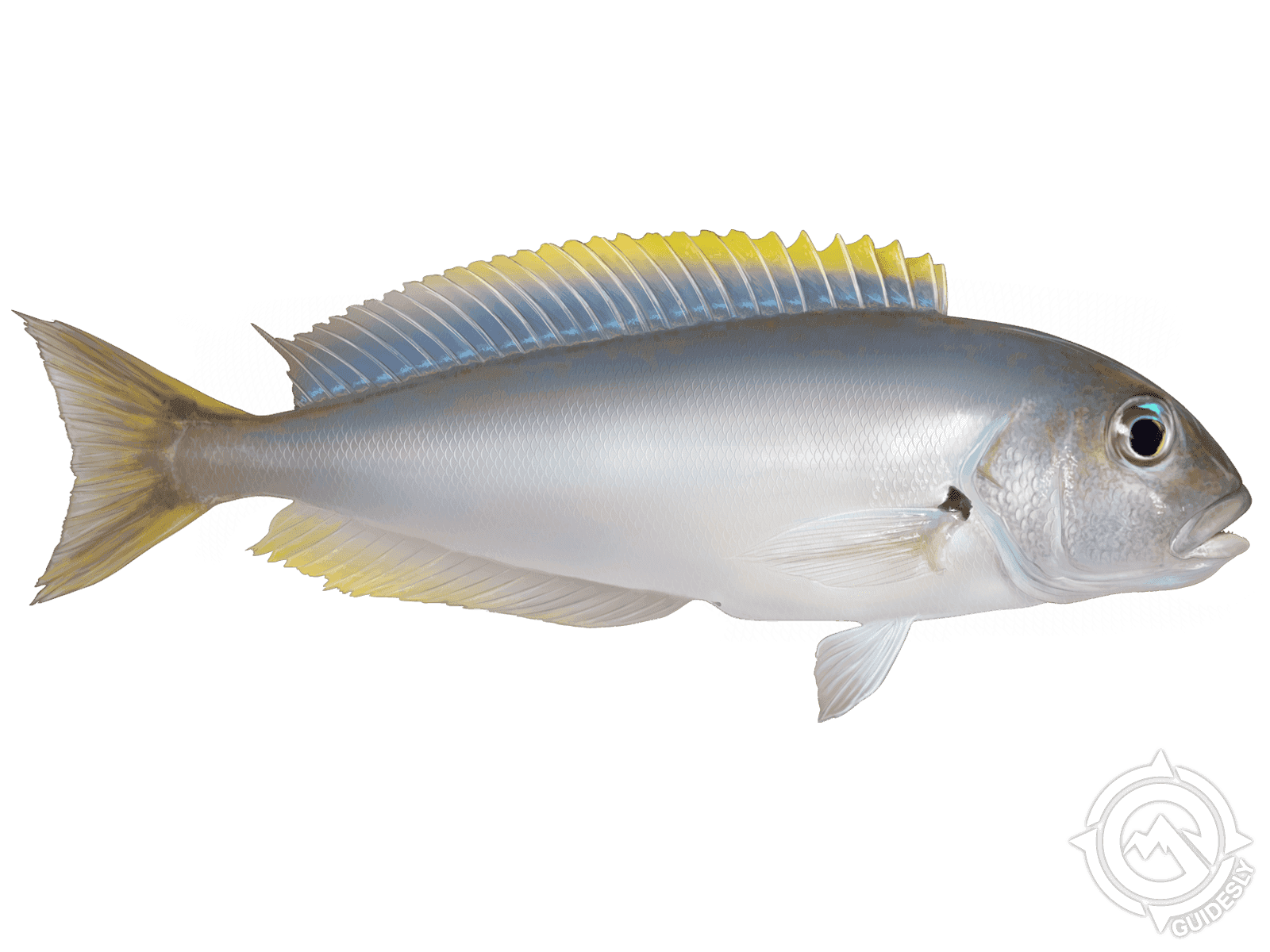Blackline Tilefish

Species Details
Caulolatilus Cyanops
Malacanthidae
Perciformes
Offshore, Reef, Wreck
10 - 24 lbs.
11" - 24"
Blackline Tilefish (Caulolatilus cyanops) Fish Description
Blackline tilefish is considered to be a part of the species of tilefish native to the western Atlantic Ocean.
The Blackline tilefish have a violet-blue body, with numerous dark reticulated lines, alongside a dark stripe along their upper back, with a white underside. The ridge along their napes is yellow-hued. They have a robust, quadrangular body, relatively deep and rounded head profile. They have a fleshy ridge along their midline just before their dorsal fin. They have silver cheeks and a greenish-blue oblique bar from their eye up until the top of their lip. They have orange-yellow membranes of their spiny dorsal and a dark blotch above their pectoral base. And most of their top and bottom lobes are covered by two yellow areas.
Diet & Size
Blackline Tilefish diets consist primarily of a variety of invertebrates and smaller fishes, such as benthic worms, sea stars, sea cucumbers, sea urchins, gastropods, shrimps, crabs, and other bony fishes.
The maximum recorded length of the Blackline Tilefish is around 24 in., but on average, they are no longer than 12 in. As for their weight, their maximum large weight for this species is about 24 lbs.
Interesting Facts about Blackline Tilefish
- Since the Blackline Tilefish inhabit the deep, cold waters of the continental shelf, such as other known tilefish, they were only discovered by the year 1879.
- The majority of the tilefish in the market is the Golden Tilefish, caught off the East Coast of the USA. Our little buddy, the Blackline Tilefish is more often caught in Florida.
- Since their discovery, the Blackline Tilefish has become an important part of commercial fisheries, and they have notably somewhat softer flesh in comparison to other commercial tilefish.
- Some people may mistake the Blackline Tilefish for a Sea Bass due to some of its aesthetic similarities.
- In some places, Blackline Tilefish can be served as Sashimi. Though, most places prefer serving it as grilled, baked, poached, or steamed.
Blackline Tilefish - Fishing Techniques
The Blackline Tilefish is considered to be commercially important and sought out game fish, who hang out in the deep, deep waters.
For you anglers out there waiting to catch your very own Blackline Tilefish, the best bait we can recommend for you is squid, as it is one of their favorites. But you can also try for bonito, tuna, mackerel, and barracuda as they work just as well. And when possible, always go for fresh-cut baits because this would help by staying on the hooks when they take the plunge.
These Tilefish are sight and scent feeders. So when you drop the lead, consider using a drop light at the top. Due to the huge water pressure, a Cyalume lightstick ain’t going to cut it. You have to try for something much more well-built, with a plexiglass light that can clip onto the leader. You can get these types of light in a variety of colors, as well. As commercial deep-droppers say, No light, no bite.
Now that we’ve had sight covered, time to concentrate on the scent. When you’re calling out for these bad boys in from their backyard. So you’ve dropped your lead to getting their attention, now for the pickup, using the bait recommended above would almost always grant you that success.
What makes bottom fishing for these Blackline tilefish difficult would be having to deal with the external. Say, for example, you’re bottom fishing in the south of Florida, best expect you’ll be dealing with some current. So remember to get knots on average up to 3 to 5, on the Gulf Stream or else, before you know it you’re way off track of the spot you need to be to catch your target.
Habitat and Distribution
Blackline Tilefish predominantly inhabit the seafloors, with sandy, or muddy substrates at depths from 148-1,642 ft., but most commonly found to be in between 490 to 820 ft.
This species of tilefish is considered to be native to the West Atlantic Ocean, where they can be observed from North Carolina to the North coast of South America.







